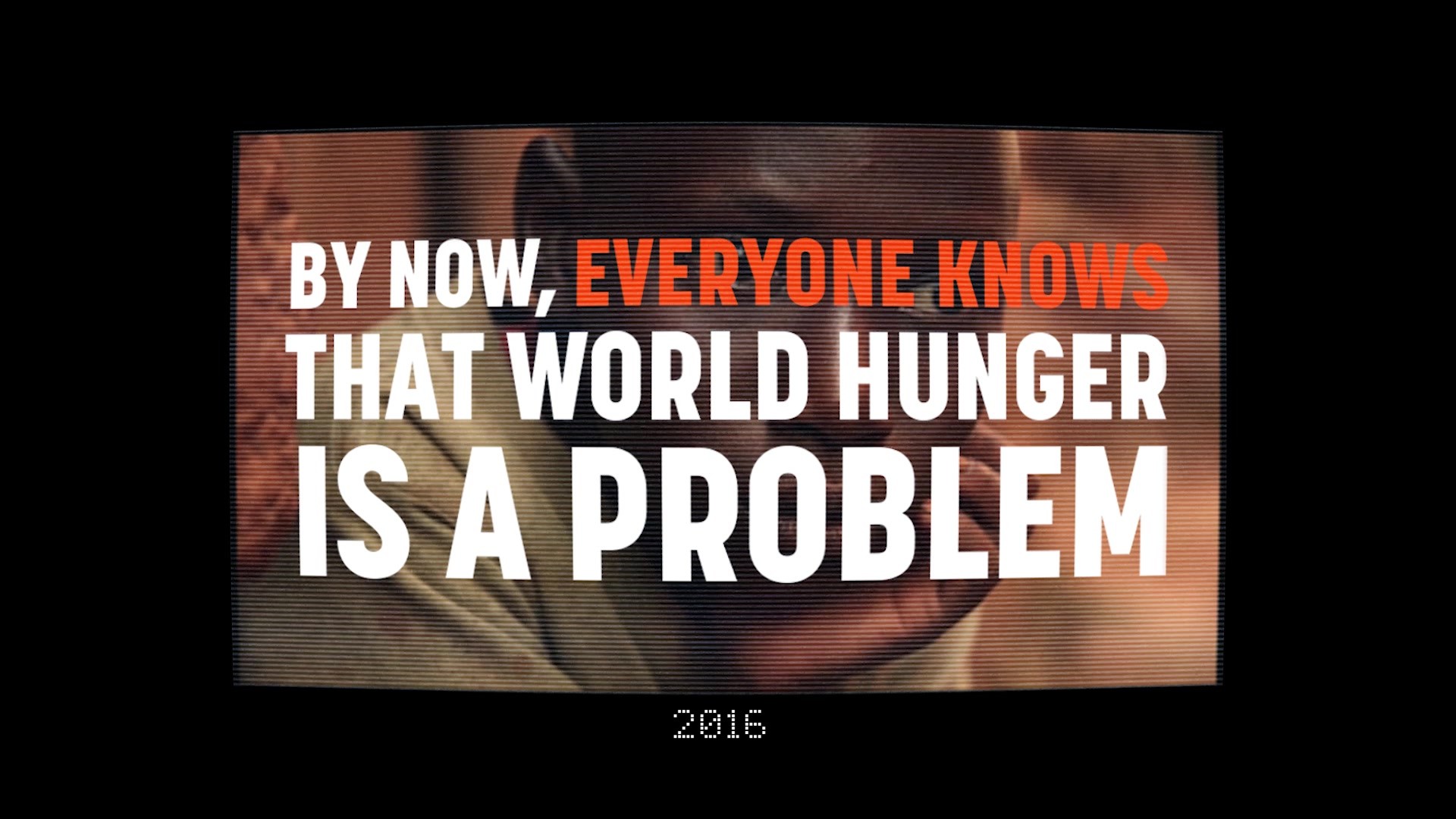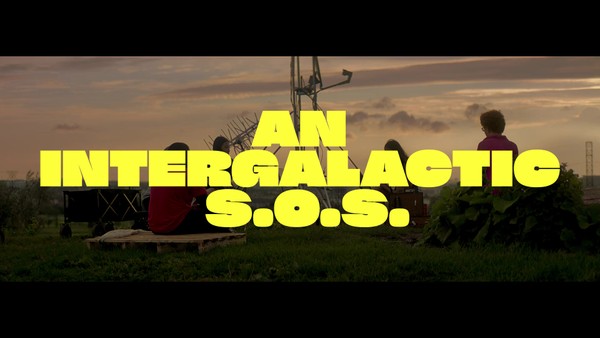Sustainable Development Goals > People
BURP
BROKEN HEART LOVE AFFAIR, Toronto / WORLD VISION CANADA / 2024


Overview
Credits
OVERVIEW
Why is this work relevant for Sustainable Development Goals?
World Vision Canada is a partner to the UN’s Sustainable Development Goals and this particular campaign focuses on the “Zero Hunger” initiative to eliminate global hunger by 2030 by rallying people in a positive to give to bring food, systems and education to the millions of people and nations in need of immediate support and long-term, self-sustaining solutions. More than 783 million people globally face hunger and World Vision is feeding 2.8 million This campaign is a drive to garner enough resources to take care of so many more people in need.
Please provide any cultural context that would help the Jury understand any cultural, national or regional nuances applicable to this work.
World Vision Canada has significant awareness in Canada and a dominant perception defined through history of being a Christian organization, for Christian donors, with a mission to espouse Christian views on the world. While this may have been true of its origins, it’s not true of the current reality. However, the American arm of World Vision is still overtly holds on to its overt Christian communications and the media spillover from the US to Canada is significant. To overcome competing messaging would require something drastic.
WVC is also dealing with a perception problem around effectiveness, as after decades of using images of people in abject poverty to drive donations, their donors are starting to feel that their contributions aren’t making a real impact. So they're asking themselves, “Why are we continuing to give money when it doesn’t seem to make any difference?”
In addition, as with most of the world, inflation is causing significant conversation around sky-rocketing food prices, which is even making it difficult for people who are making decent salaries to make ends meet for their families and there is a general sense of frustration with the government and grocery brands across the country.
How does this campaign fit into the overall brand objectives? How is this part of the brand's wider commitment towards the UNs Sustainable Development Goals?
World Vision Is one of 5 members of the UN Sustainable Development group working towards completing 17 goals by 2030 in order to create a sustainable future. Zero Hunger is one of those key goals and this project focuses explicitly on ending hunger.
There are over 45 million people globally facing food insecurity and World Vision feeds 2.8 million of them. But, they don’t simply stop at feeding individuals, they teach and equip villages with the skills, education and opportunity to sustain their own food sources vis-à-vis farming and clean water initiatives. World Vision Canada maintains a 5-star rating and is one of the top charities in Canada when it comes to financial transparency, according to Charity Intelligence Canada 2023 (https://www.charityintelligence.ca/charity-details/33-world-vision-canada), so dollars raised and spent are transparently disclosed and ensures donors know that their funds are being put towards development goals.
Background
World Vision is one of 5 members of the UN Sustainable Development committee with a 5-Star rating from Charity Intelligence Canada in 2023 for financial transparency. Ending hunger has been a core goal from day one in the 1950’s, feeding children in particular. Nourished children are critical to health and education, and happiness and plays a critical role in the long-term, sustained success of people.
Rather than show starving kids when even people close to home were suffering from food insecurity, we chose to focus on the power of World Vision to feed so many children when we have the resources. More than 783 million people worldwide are facing fhunger and World Vision is feeding 2.8 million of them. With more resources, they could feed even more people.
The Brief:
Solve world hunger with child-like wonder.
Objectives:
Increase website traffic
Change perception from a Christians-only organization (long-term)
Describe the cultural / social / political climate and the significance of the work within this context
As a Christian organization, and one particularly tied to the US office, which is still incredibly religious. “Burp!” was a challenging concept to buy. However, the clients were trusting and believed in the strategy and the creative idea. This was a huge departure and an organizational risk.
Another consideration is that the world since COVID has become more stressful for everyone. In fact, https://www.bloomberg.com/opinion/articles/2023-11-02/stress-of-covid-pandemic-lingers-in-americans-minds highlights what many studies are showing that people are more burnt-out than ever and are looking for something light and entertaining and positive and this was our attempt to bring a light appeal to a category that is dominated by sadness or fight language.
Describe the creative idea
We turned to the creative power and spirit of children to show what’s possible when children are fed. The result is an a-political, a-religious burpfest that breaks all norms and shows that what’s possible is that kids can experience their rightful childhood when they are properly nourished.
“Burp!” travels the world through regions observing children engaging in the most childish endeavours – burping, giggling, and cheering, Plates are slung, kids’ bellies are full and groups of kids are in their glory being, well, kids as parents and teachers look on; sometimes in disapproving fashion – the kids ignore them. The entire film is a symphony of burps and laughing underpinned by playful and joyful music. The experience breaks traditional sensibilities and norms when dealing with starving children in developing nations and shows the power of what is possible when kids can be kids because they are properly fed.
Describe the strategy
28% of Canadians are likely to donate and we chose to focus on garnering the attention of those likely donors by attracting them to World Vision Canada through positivity and empowerment, which was guided by a key piece of research from Carnegie Mellon University entitled The Critical Link Between Tangibility and Generosity, (Cryder, et al. 2009), which highlights the Goal Proximity Effect, which is a psychological phenomenon that details that people are more motivated to take a specific action the closer you are to a goal. Therefore, the thrust of the strategy is to make people feel the impact of a successful World Vision, where past efforts have been focused solely on the need.
Describe the execution
“Burp!” is a whimsical film about Food Insecurity for World Vision Canada, a registered Not for Profit. Directed by Aaron and Winston Tao, it ran in OLV, TV, and Cinema as :30s, :15s, and :06s, followed with digital ads which drove to donate at World Vision Canada’s website.
Film was purposefully chosen to shift emotional perceptions of both children in need and who they are as humans, and the organization and its applicability to the lives of non-Christian donors and recipients.
“A symphony of burping … with a series of shots of empty plates and children all letting out a burp - to the delight of their peers, and the chagrin of parents and teachers. The spot ends with the tagline, 'Feed a child, feed a childhood.' All of the burps in 'Burp' are real.” LBB Online.
Describe the results/impact
The campaign captured attention and drove renewed resonance among potential donors. Viewers were 3x more likely to donate after seeing the ad and considered World Vision Canada to be 2x more trustworthy. There was a +60% YOY boost to web traffic to learn about World Vision’s initiatives, and there was a significant +150% increase in people feeling that their donations were making an impact.
Describe the long-term expectations/outcome for this work
Our hope is that this work showcases kids in developing nations as kids that are humans, and that in doing so we build a greater sense of connection and empathy that extends beyond donations and shifts attitudes and behaviours that has a lasting impact.
The client is looking to make the campaign larger next year to extend both in time in market and applications across touch points with a multi-year program and strategy and, from the results, we are excited by how growing this campaign will put food in more kids' bellies to allow them to be kids.
Were the carbon emissions of this piece of work measured? For additional context, what consideration was given to the sustainable development, production and running of the work?
Rather than travelling the world to capture footage for the spot, we set up base in South Africa and used nearby locations and set dressing to approximate the places World Vision Canada operates. This helped us severely limit our carbon emissions of plane travel, and save our client money to reinvest in their mission.
The piece was filmed with all-local crew, and nearby communities were helped through donations, such as meals given to district residents and cash donations for the school where one scene was filmed.
More Entries from Hunger in Sustainable Development Goals
24 items
More Entries from BROKEN HEART LOVE AFFAIR
24 items








